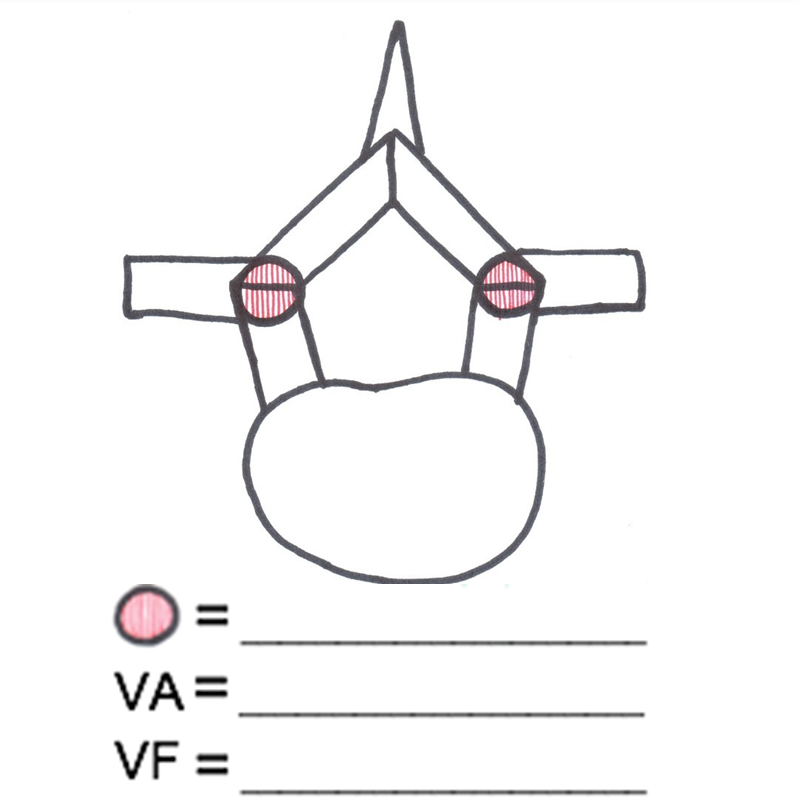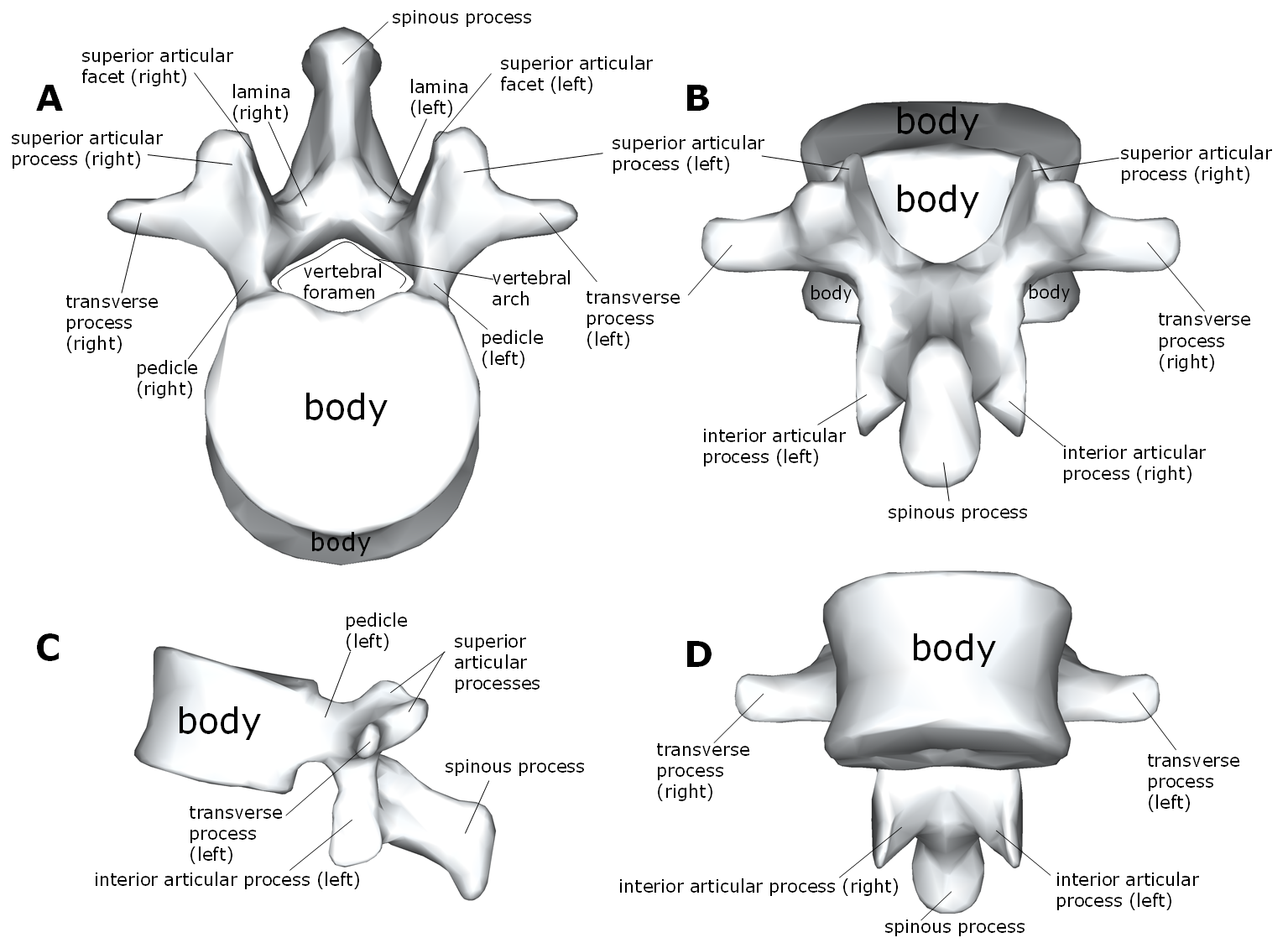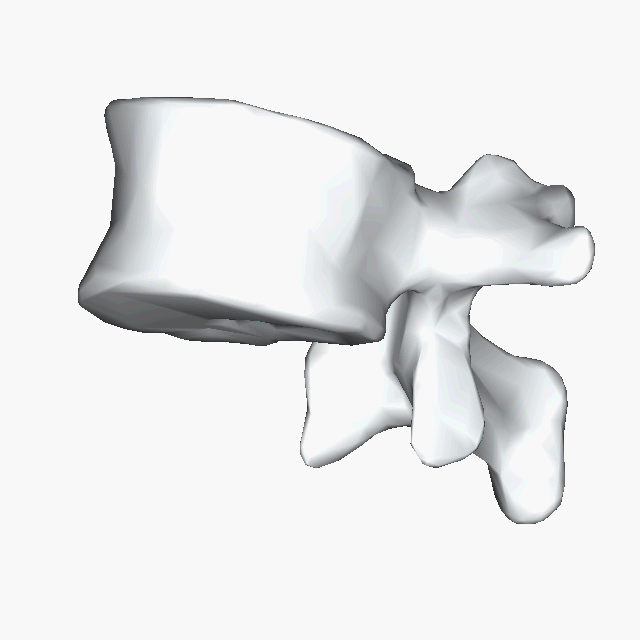8.5.2: Generalized Structure and Markings of Vertebrae
- Page ID
- 53925
Generalized Structure and Markings of Vertebrae
All three types of vertebrae have some structural features in common and some features that are distinctly different enabling you to readily distinguish vertebrae in one category (cervical, thoracic, or lumbar) from another.
All vertebrae except C1 and C2 have a solid round portion on their anterior side called the body of the vertebra. The body is what allows the vertebrae in the vertebral column to be stacked upon one another, separated by pads of fibrocartilage called the intervertebral discs. The lower you go in the vertebral column, the larger the vertebrae’s bodies become.
Two branches off of the body, known as pedicles, connect with two other branches, known as laminae (sing. lamina), to form a circle-like structure. Posterior to the vertebral body, this large, roughly circular opening in each vertebra is called the vertebral foramen. This is the hole through which the spinal cord passes. When the vertebrae are stacked in a column, these vertebral foramina align with each other to create the spinal cavity (part of the dorsal body cavity) where the spinal cord pass through the vertebral column.

Above: This diagram is a simplified version of a generalized vertebra from either a superior view or an inferior view. This diagram can be labeled with the following terminologies: vertebral body, right pedicles, left pedicle, right lamina, left lamina, right transverse process, left transverse process, spinous process, right superior/inferior articular facet, left superior/inferior articular facet, vertebral arch, vertebral foramen.


Above: Markings of a vertebra with a (A) superior view (anterior at the bottom of the image), (B) posterior view, (C) lateral view of the left of a vertebra, and (D) anterior view.
Posterior to the vertebral foramen, projecting posteriorly from the laminae, is a single, central process known as the spinous process. Additionally, a pair of processes point roughly laterally away from the pedicles/laminae - these are called transverse processes. Paired, smooth facets are positioned at the superior and inferior aspects of each vertebra called superior articular facets and inferior articular facets, respectively. The superior facets articulate with the vertebra above and the inferior facets articulate with the vertebra below. These smooth facets are projected away from the pedicles/laminae on paired processes called superior articular processes and inferior articular processes.
Attributions (All Vertebral Column Sections)
- "Anatomy 204L: Laboratory Manual (Second Edition)" by Ethan Snow, University of North Dakota is licensed under CC BY-NC 4.0
- "Anatomy and Physiology" by J. Gordon Betts et al., OpenStax is licensed under CC BY 4.0
- "BIOL 250 Human Anatomy Lab Manual SU 19" by Yancy Aquino, Skyline College is licensed under CC BY-NC-SA 4.0
- "BodyParts3D/Anatomography" by The Database Center for Life Science is licensed under CC BY-SA 2.1
- "Cervical vertebra english.png" by user:debivort is licensed under CC BY-SA 3.0
- "Sacrum - animation02.gif" by BodyParts3D is made by DBCLS is licensed under CC BY-SA 2.1


